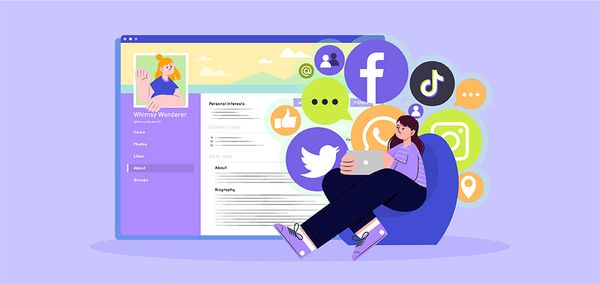Ultimate Guide of Facebook Marketplace Fees When Dropshipping

Facebook Marketplace has emerged as one of the most widely used online marketplaces in recent years. However, you should be mindful of the costs Facebook will charge you if you attempt to launch a business there, particularly a dropshipping business.
Let’s learn about Facebook marketplace fees when dropshipping.
What Is Facebook Marketplace
The Facebook Marketplace is an online marketplace where users can make arrangements to purchase, sell, and trade products. All transactions happen outside of the app and are not, by any stretch of the imagination, Facebook's legal duty. Using Facebook Marketplace, you can:
- Look for products to purchase.
- Make product listings. Using the app's camera feature or adding photographs from your device's camera roll, you may take the images for the item. Items are organized by category and location.
- View products up for sale by category and location.
- View communications and prior and present transactions in the "Your Items" area.
- Create individual bids on products.
- Send messages to buyers and sellers to set up trades.
Facebook Marketplace is a very successful eCommerce trade site. It is also one of the biggest selling channels in terms of the user base. As of 2021, Facebook Marketplace had more than a billion active users, according to Statista.
How Does Facebook Marketplace Work
The Facebook app has a function called Facebook Marketplace that enables users to transact with locals to buy and sell goods. Simply launch the Facebook app and touch on the Marketplace symbol (it looks like a storefront). You may then go through the listings or add your own.
There are two options for selling on Facebook Marketplace for a single person: local pick-up or countrywide delivery.
Pros and Cons of Facebook Marketplace
To decide whether you should choose it or not, the pros and cons of Facebook Marketplace is worth learning:
The following are the main benefits of listing your product on Facebook Marketplace:
- Extended reach: More people will see brands and items thanks to Marketplace's expanded reach for eCommerce merchants. Consequently, it will provide firms access to more relevant customers.
- Personalized experience: A personalized customer experience is provided by Facebook Marketplace, which helps your company locate the ideal clients.
- Free listing fee: One of the biggest benefits of selling on Facebook is the platform's free marketplace listing option for merchants.
- Create a connection with your customers: As a social network, Facebook enables customers and merchants to communicate directly. They may also ask questions regarding the product immediately. And this fosters stronger interpersonal connections.
- Enhanced brand visibility: When a product is posted in a marketplace, its brand name is made apparent alongside other information. As a result, even if the customer has no interest in your products, they will still receive some exposure.
Although the online store has many advantages, maintaining customer confidence is a constant struggle. Additionally, before buying or selling online, individuals frequently inquire, "Is Facebook Marketplace safe?" Think about the following drawbacks of Facebook Marketplace while keeping these thoughts in mind:
- Purchases aren't secure: Since Facebook doesn't check the authenticity of any selling products, the system is mainly based on faith. You may only use the checkout system to make delivered purchases from Facebook shops to receive purchase protection.
- Facebook does not screen buyers or vendors: The platform makes posting easy for a purpose. Facebook does not vet customers and sellers or check items, which exposes the site to fraud and garbage.
- Safety concerns: Since Facebook Marketplace doesn't offer a shipping service, in-person encounters are typically necessary for goods trades. Most people dislike it when strangers knock on their door unless they carry an extensive check with their name on it. Additionally, arranging meeting locations might be troublesome and even dangerous.
Do You Need to Charge Facebook Marketplace Fees When Dropshipping
There are no costs associated with purchasing products through Facebook Marketplace. Additionally, it's free to just put an item for sale.
Only when you formally sell an item will you be required to pay a fee. Facebook deducts a portion of the total price once you deliver the product and are compensated.
Remember that Facebook assesses this cost per shipping rather than every order. Therefore, if you're completing a single transaction that requires two separate shipments, they'll assess a fee on each shipping depending on the price of each shipment separately.
Facebook Marketplace Fees When Dropshipping that You Should Know
Let’s take a look at the most crucial part about Facebook Marketplace fees when dropshipping.
Selling Fees
The selling fees, when dropshipping, including shipping and taxes, are instantly subtracted from the payment as soon as it is received. If the purchaser files a chargeback, which we will cover later, the selling fee is not refundable.
When a consumer purchases an item from you and makes their payment through Facebook, you will notice a "Payment Processing Fee" (For Items Sold Nationwide) message.
- $8 or less in sales: The minimal selling fee is $0.40.
- More than $8 in the sale: 5% fee for any purchase.
For example, if you sell anything for $5, Facebook will remove $0.40 from the price, leaving you with $4.60. They will deduct 5% from the sale price of a $100 item, leaving you with a final payment of $95.
Whether you are a person or a corporation, the selling charge is the same for all sellers. The only exception is if you are eligible for Facebook's program for waived selling costs, which will be covered later.
Prepaid USPS and UPS Shipping Labels
Facebook does provide the buyer with Purchase Protection. The buyer must speak with the seller to find a solution before starting the Purchase Protection. The seller may reply and try to fix the problem for up to two business days. The buyer can then contact Facebook support and submit a claim if the vendor is unresponsive. The buyer may submit a claim within 45 days of the delivery date or 60 days after the unlawful payment.
| Get Started Now to Grow Your Online Business with the Best AliExpress Dropshipping Tool - DSers! |
If the products are not as advertised, are damaged, or if the purchase was not authorized, Facebook will issue a refund to the customer. The seller's earnings will be reduced by the amount of the refund.
In other words, Facebook will not reimburse you for the price of the item or delivery if you are the dropshipper and the goods were lost or destroyed. However, you may submit an insurance claim for Priority Mail or UPS through USPS. Unfortunately, USPS First Class mail is not covered by insurance. You must acquire shipping insurance from a third-party source and add the cost to the item's price if you wish to provide it to your customers.
Chargeback Fee
Customer can at any point request a chargeback or, to put it another way, a refund. When a transaction has been finished and delivered, a buyer may register a chargeback several months later.
When a customer contacts their bank, Visa, Mastercard, or another financial institution to dispute a transaction, the card issuer will determine whether to accept the customer's challenge. If accepted, Facebook will deduct the cost of the item and $20 (the chargeback fee) from your profits. To decide on a chargeback claim, card issuers may take up to 75 days (nearly 3 months).
Here are several reasons a customer could submit a chargeback request:
- The product was not delivered to the consumer.
- Unauthorized money was exchanged.
- Scammer.
- The product considerably differed from what was stated.
- Buying regret.
- The identical products were billed to the client numerous times.
You have ten days to dispute the chargeback if you disagree with the decision and can do so by providing evidence that you fulfilled the purchase. Evidence supporting your case, including tracking data, delivery confirmation, an image of the transaction invoice, and contact with the customer.
If your appeal is successful, Facebook will release the $20 and credit your profits for the price of the item they are holding. If you lose the case, your profits will be reduced by $20 in addition to the item's cost.
You will lose the case if you don't react to the chargeback within 10 days. Veteran sellers strongly advise keeping a tight check on your account after the holidays since that is when customers file chargebacks, most frequently out of buyer's regret.
Facebook's Waived Fees
On occasion, Facebook will declare that their usual costs are being waived or that particular categories or price amounts will receive free delivery. Any events that involve waived costs or free delivery will be announced to all merchants beforehand.
You may join their Facebook group or contact Facebook support if you have any queries regarding their current program.
Bonus Tips on Optimizing Facebook Marketplace Fees
If you want your dropshipping listing to be viewed, you must go above and beyond what is required by the rules. Here are some methods for differentiating your product from competitors and optimizing your Facebook Marketplace fees.
Conduct research: You may quickly search to learn about the most popular products. You may want to look into what others have to say about Facebook marketplace costs. What are the benefits and drawbacks?
Set reasonable prices: Be sure to maintain a competitive edge while selecting your rates. Make sure your pricing is reasonable by looking at what other vendors are asking for comparable goods. You also need to consider the Facebook Marketplace fees to set your prices.
Write detailed descriptions: Customers will be curious about every aspect of the goods you're offering. You can also mention some fees you must pay to explain your price.
Provide shipping details: Even if you sell to local clients, you should raise your pricing and add delivery. You can demonstrate that you are willing to transport the item anywhere globally by adding shipping. This increases the appeal of your dropshipping listing to purchasers who are located outside of your local region.
Promote in other places: Facebook Marketplace is not the only and best place for dropshipping. You can separate your listing to other platforms like websites and eCommerce sites,...
Help from dropshipping tools: As mentioned above, you need to separate your listing from other platforms. It may be challenging to manage everything. DSers will be your best option for managing your dropshipping business. With Multiple store management, the Bundle products feature,... will help you manage your dropshipping business in one dashboard.
Final Words
You are aware of the various costs and how to avoid them at this point. With affordable selling fees, you can easily start dropshipping on Facebook and earn significant profits. Learn more about dropshipping tips on DSers Blog.












 Company
Company
 Why Choose DSers
Why Choose DSers
 Blog
Blog
 Help Center
Help Center




 Live Chat
Live Chat